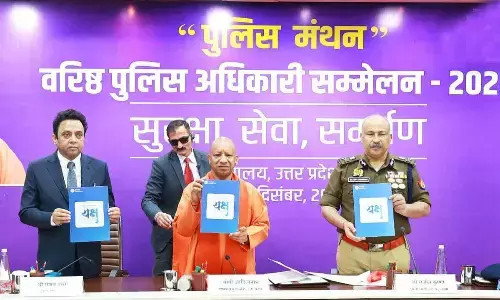Disingenuous attack

Attacks on Nehruvian model have become more pronounced since the advent of BJP government at the Centre. In fact, the Congress way back in 1990s itself disowned Nehruvian economic path. As the nation observes the 125th birth anniversary of the architect of modern India, a honest reassessment of Nehruvian legacy is eminently sensible.
 Attacks on Nehruvian model have become more pronounced since the advent of BJP government at the Centre. In fact, the Congress way back in 1990s itself disowned Nehruvian economic path. As the nation observes the 125th birth anniversary of the architect of modern India, a honest reassessment of Nehruvian legacy is eminently sensible. The foremost criticism on Nehruvian paradigm in the neo-liberal era is that his model of state intervention in the economy has harmed the nation.
Attacks on Nehruvian model have become more pronounced since the advent of BJP government at the Centre. In fact, the Congress way back in 1990s itself disowned Nehruvian economic path. As the nation observes the 125th birth anniversary of the architect of modern India, a honest reassessment of Nehruvian legacy is eminently sensible. The foremost criticism on Nehruvian paradigm in the neo-liberal era is that his model of state intervention in the economy has harmed the nation.
But, such a criticism deliberately ignores the context in which Nehru led the nation. The two centuries of colonial plunder led to years of economic depression characterised by agrarian stagnation and deindustrialisation. The Indian private capital was neither mature nor capable of laying the industrial foundation of independent India. The urge for translating political independence into economic independence did not appreciate the fledgling nation inviting foreign capital to build the country’s economy.
In fact, the metropolitan capital was not even inclined to build a robust domestic economy. This was the context in which the Nehru’s doctrine of dirigiste economic strategy emphasised on heavy industry, public ownership and import substitution. It was essentially a state capitalism, though it was socialist in rhetoric. This paradigm has a strong backing of the Indian capital, too. Thanks to this model, India could create steel plant, oil and gas exploration, heavy engineering, aeronautics, electronics, aerospace, defence technologies, etc.
But, the shortcoming lies in the failure to curb asset and income concentration, monopolies, and inequalities that marred the realisation of the full potential of domestic market. The course correction in the economic trajectory was missing when obsession with state-run economy stifled enterprise and competition.
With all its imperfections, the success of India’s parliamentary democracy found its roots in Nehru’s leadership. As his biographer S Gopal rightly described, Nehru was "a granite core of intellectual and moral commitment to democratic values.”
When French writer André Malraux asked Nehru what had been his most difficult task, he replied, "Perhaps creating a secular state in a religious country.” Nehru’s understanding of secularism was scientific and inclusive without which the nation would have slid into theocratic autocracy or perpetual social anarchy like its contemporaries.
India’s rapid strides in frontier areas of science and technology like atomic energy, space, etc. are a result of Nehru’s vision of modern India. Along with scientific achievement, the development of a scientific frame of mind and a scientific habit of thinking was equally important in Nehru’s worldview.
India’s international stature as a leader of emerging Third World evolved out of Nehruvian foreign policy of non-alignment. Though this commitment was diluted in the post-cold war period, its significance cannot be undermined as the world faces the ugly effects of unipolarity. Nehru’s policy of non-alignment did not mean equidistance or isolationism.
An attack on Nehruvian legacy is, therefore, disingenuous. In his historic address to the nation – Tryst with Destiny – Jawaharlal Nehru envisioned an India, “where democracy and civil rights are ensured to everyone, where the social inequalities which are the characteristic features of colonialism, are overcome, where economic progress with an emphasis on quality of life of the people is achieved.” The real tribute to Nehru would be bridging the gap between possibility and reality, and the India that is and the India that could be.
Woman injured in stabbing attack in Tokyo, suspect at large
Bengal cop booked for murder over mysterious death of woman home guard, SIT to probe case
Staffer recalls horror of 7-kg gold robbery by armed gang in Karnataka’s Hunsur
25-Year-Old Airline Cabin Crew Member Dies At Gurugram Party; Police Begin Investigation
















